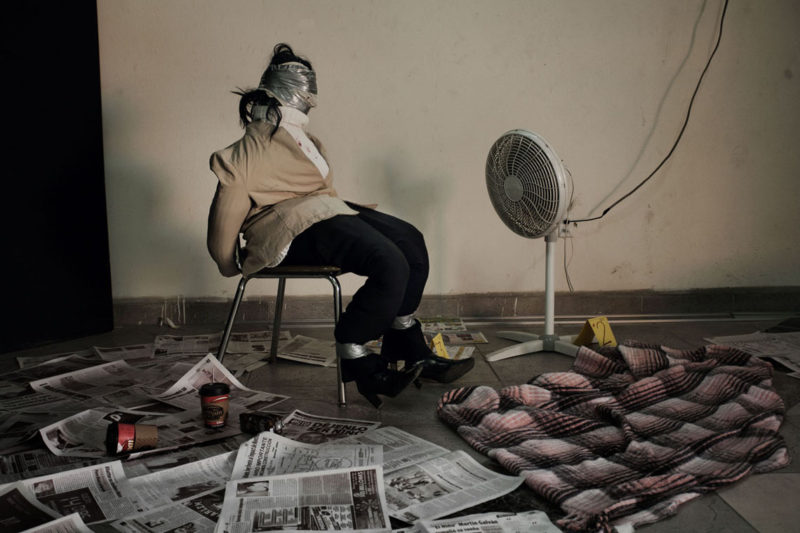“The single biggest mistake that a photographer can make is to believe in the profession, to believe in magazines and newspapers. When that happens, you have already failed. One must work first and foremost to satisfy oneself. And in my case [Vietnam Inc.] I always knew my goal was a book on the war.” – Philip Jones Griffiths (quoted from an interview with the photographer done by Geert van Kesteren, Brigitte Lardinois, and Julian Stallabrass; in: Julian Stallabrass (ed.), Memory of Fire: Images of War and The War of Images, Photoworks, 2013, p. 68)
Much has been said and will continue to be said about photojournalism and its ability or inability to tell stories, and to reach people to tell those stories. If there is a perfect way to tell a perfect story, perfectly reaching all those concerned and those not-yet concerned, then I’m not aware of its existence. And it would seem everybody else is in the dark as well.
The real question, however, is whether any of this really matters. The concerns Philip Jones Griffiths had to deal and struggle with probably were different from the concerns photojournalists are facing today. Even the stories might be different – peel away enough from the surface, and there might appear more and more similarities.
And the need to tell the stories has been unchanged. Someone needs to go out and make work and then bring that work to everybody else who does not have access, for whatever reason. This drive, as messianic as it occasionally might appear, sits at the very heart of many photographers’ work, regardless of whether they are photojournalists or fine-art photographers or whatever else: You believe in something, and then you work on getting it done, “first and foremost to satisfy[ing] oneself.”
Jérôme Sessini‘s The Wrong Side tells the story of a war, a war that has been going on for years, literally within eye sight of the United States: The war the Mexican government launched on drug cartels, a war that has claimed, so far, between 60,000 and 100,000 lives (there do not appear to be very reliable statistics; btw, this is roughly the same number of casualties as claimed by the civil war in Syria so far). The book is a bleak affair, with overabundant images of drugs, violence, and prostitution.
“I sensed nothing there but despair, resignation and fear.” writes Sessini in the afterword. “As though the poor things knew themselves to be condemned in perpetuity. Their life resembled a long expiatory cavalry, for having committed the sin of being born in the wrong place at the wrong time.”
The Wrong Side relies on photographs first and on text later, diaristic text that has the photographer talk about some of his experiences. It’s never quite clear what the story is (I don’t mean this in any kind of flippant or negative way). Maybe this is part of the problem at the heart of photojournalism: Peel away the material at the surface, and the question really is about what the story is (or should be), and less about the people caught up in that story.
For me, the book deftly avoids this story pitfall. It allows the viewer to come up with their own story, with their way of relating what is to be seen to their own reality. There is a lot of misery, there is a lot of blood; I suspect only those devoid of any form of empathy will manage to remain unmoved.
Thus, maybe The Wrong Side hints at another kind of storytelling, a storytelling that does not define the story a priori, but that allows the viewer to build one. Photojournalism is said to have come to a dead end because of its insistence that individual photographs tell compelling stories. What is to be gained from letting go of that idea, from letting a group of photographs create their own, powerful entity, is demonstrated by this book.
Highly recommended.
The Wrong Side; photographs and text by Jérôme Sessini; 176 pages; Contrasto; 2013
Ratings explained here.
